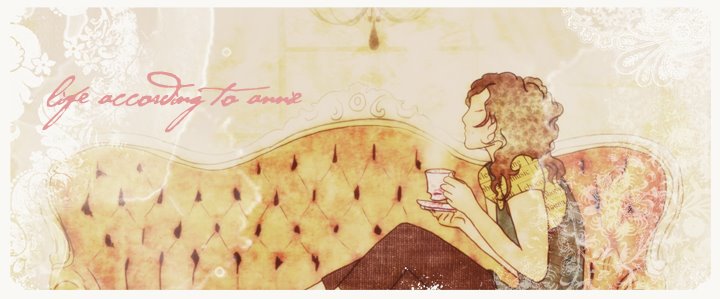III. Devaluation of Women Today
A. Media
Watch MTV for a few minutes, or listen to a few minutes of hip hop, and you'll find that the devaluation of women still continues today.
In today's culture, it's impossible to avoid the media, so we must be aware of lies in the media so that we will not believe them.
1. The average young TV viewer will see about 14,000 references to sex each year. Teens themselves say that TV, as well as movies and other media, are some of their leading sources of information about sex and sexuality. But do these images give people realistic, healthy, equality-minded views of sex?
a.Of the roughly 14,0000 references to sex a teen would see on TV each year, only a about 165 will include any reference to abstinence or delay of sex, birth control, risk of pregnancy, or sexually transmitted disease.
b.MTV, regularly includes girls and women in the traditional role of sex object. Girls and women who are serious musicians (excluding singers) are rarely featured.
c. A study of video games found that the few female characters in those games are often highly sexualized—wearing tight revealing clothing and having unrealistically large breasts and distorted small waists. Video games and other media sometimes use prostitutes as characters that are targets for the male hero. In a game from the Duke Nukem series, prostitutes are forced to strip and are then killed. In the number one selling video game for 2001, Grand Auto Theft III, the player can clobber a prostitute with a baseball bat with a new game technique that allows the player to feel he or she is really doing this.
d.The average North American girl will watch 5,000 hours of television, including 80,000 ads, before she starts kindergarten. In the United States, Saturday morning cartoons alone come with 33 commercials per hour. Commercials aimed at kids spend 55 per cent of their time showing boys building, fixing toys, or fighting. They show girls, on the other hand, spending 77 per cent of their time laughing, talking, or observing others. And while boys in commercials are shown out of the house 85 per cent of the time, more than half of the commercials featuring girls place them in the home.
B. It Sells
1. Obviously, in advertising, women’s bodies are used sexually to sell products more often than men’s.
2. A 1997 advertising study showed that white women in roughly 62% of ads were "scantily clad", in bikinis, underwear, etc, while the same was true for 53% of black women. For men, the figure was only 25%. Women were also represented in stances of powerlessness more often, and black women were likely to be featured in animal prints, in predatory poses.
3.Women who are insecure about their bodies are more likely to buy beauty products, new clothes, and diet aids.
a. It is estimated that the diet industry alone is worth anywhere between 40 to 100 billion (U.S.) a year selling temporary weight loss (90 to 95% of dieters regain the lost weight).
b.Researchers report that women’s magazines have ten and one-half times more ads and articles promoting weight loss than men’s magazines do, and over three-quarters of the covers of women’s magazines include at least one message about how to change a woman’s bodily appearance—by diet, exercise or cosmetic surgery.However, advertising rules the marketplace and in advertising thin is "in." Twenty years ago, the average model weighed 8 per cent less than the average woman—but today’s models weigh 23 per cent less.
4. Research indicates that exposure to images of thin, young, air-brushed female bodies is linked to depression, loss of self-esteem and the development of unhealthy eating habits in women and girls.
a. The American research group Anorexia Nervosa & Related Eating Disorders, Inc. says that one out of every four college-aged women uses unhealthy methods of weight control—including fasting, skipping meals, excessive exercise, laxative abuse, and self-induced vomiting.
b.The pressure to be thin is also affecting young girls. Weight control measures are now being taken by girls as young as 5 and 6. Several studies indicate that nearly half of all preadolescent girls wish to be thinner, and as a result have engaged in a diet or are aware of the concept of dieting.
c. In 2003, Teen magazine reported that 35 per cent of girls 6 to 12 years old have been on at least one diet, and that 50 to 70 per cent of normal weight girls believe they are overweight. Overall research indicates that 90% of women are dissatisfied with their appearance in some way.
The barrage of messages about thinness, dieting and beauty tells "ordinary" women that they are always in need of adjustment—and that the female body is an object to be perfected
Women become sexual objects when their bodies and their sexuality are linked to products that are bought and sold.
Women’s bodies are often dismembered into legs, breasts or thighs, reinforcing the message that women are objects rather than whole human beings.
Messages about weight loss are often placed next to messages about men and relationships. Some of her examples: "Get the Body You Really Want" beside "How to Get Your Husband to Really Listen," and "Stay Skinny" paired with "What Men Really Want."
C. Unattainable
1. In movies, body doubles are often used to substitute for "imperfect" female movie stars (such as America’s favorite actress Julia Roberts, in one of America’s favorite movies, Pretty Woman.) Eighty-five percent of these body doubles have breast implants
2.Researchers generating a computer model of a woman with Barbie-doll proportions found that her back would be too weak to support the weight of her upper body, and her body would be too narrow to contain more than half a liver and a few centimeters of bowel. A real woman built that way would suffer from chronic diarrhea and eventually die from malnutrition. Jill Barad president of Mattel estimated that 99% of girls aged 3 to 10 years old own at least one Barbie doll.
3.The survey found two thirds of women who are size 14 also thought they were overweight or fat.
4.Even with the celebrity emphasis on being size zero, fewer than one in a hundred of those surveyed said they were that size.
In today's culture, women are free to enjoy full rights and freedoms, but this doesn't mean that women are viewed as equal. Every time I turn on my radio I hear songs encouraging the idea that women are objects, and the more "beautiful", the more valuable. Every time I buy groceries I see airbrushed pictures of women next to ads that tell me to loose weight so that I can be the "real" me. Every time I go online, I see diet ads and pictures of young, underweight girls. Half of my girl friends had sex before they were 17. All of my girl friends dieted even though they wore size 5 jeans. I've had men (not Jake) encourage me to wear more make up, bleach my hair, get contacts, wear more fashionable clothes, and straighten my hair....before I was even 15. At the age of 13, a few of my guy friends told me I was a more desirable girlfriend than my friends because I had to wear a bra. I grew up in a very Christian home. It still affected me. I was not aware of the lyes of the media, and I suffered from horrible self-esteem for a long time.
If, according to the philosophy of culture for thousands of years, I'm good for nothing but to be an object....and if, according to the media today, I am only a desirable object if I look a certain, unattainable way, then what hope is there for me? I see many girls suffer from this. They believe that their biggest worth is found in their bodies.
I believe that we need to discover two truths.
1. Our bodies are beautiful, naturally.
2. Our bodies are not what gives us worth, or value. If you use your body as advertising, you will attract men who will use you, not value you.
In the next lesson, we'll start talking about solutions, alternatives, and answers.
skip to main |
skip to sidebar


Say Hello
About Me
- Annie
- Durango, CO, United States
- My name is Annie. I love photography, music and art. Since my teens, I've been working to be able to live as a freelance artist in all of these mediums. Now I travel the world with my best friend and confidant, Jake, photographing weddings, doing concerts, filming documentaries and staying up too late. I like to talk in accents when I'm in the car, and I like English tea in the mornings. When I am home, I spend my time making things, writing songs, and spoiling my pet dove. I'm particularly afraid of spiders, pipe organs and geometery. You won't find any of those things here, except for the occasional pipe organ, which you'll have to excuse. I created this blog to document my adventures, creations and obsessions, in hopes that you'll find a little inspiration in them. Happy reading!
Annie Brooks on Facebook
